Average sizes and life expectancy for this breed:
Peterbalds are the crossbreed between a Donskoy cat and an Oriental Shorthair. This cat breed is fairly new—the first of this type were bred in 1994 in Russia. Peterbalds are sophisticated, slender, and elegant cats, taking many qualities from their parentage, namely the Oriental Shorthair’s and Siamese’s gracefulness and the Don Sphynx's bald gene.
These quirky cats are easy to care for. They have fun-loving, spirited characters, and their appearance can only be described as exceptionally adorable. Peterbalds have a sense of loyalty that many other cats do not have. In fact, they are often compared to dogs because they are so affectionate toward their human companions.
Peterbalds are a rare yet highly sought-after cat breed. Their coats come in a wide variety: from completely bald to fuzzy to even a full short coat. Extraordinarily devoted and one of the friendliest breeds, they are a perfect cat breed for families and those individuals with a small home. Their sweet and curious nature has snatched the hearts of cat lovers worldwide.
This cat breed is incredibly friendly and will giddily greet guests rather than hiding in fear when they come. However, because of their social temperament, they dislike being left alone and they need constant and reliable companionship. The good news is that this companionship does not have to be human friendship alone. Peterbald cats are very comparable to their Oriental Shorthair cousins because they can form close bonds with other cats and dogs.
Peterbalds are spirited and agile. They spend their waking hours being curious about everything, helping their favourite human companion, and searching for tall vantage points in their home. They tend to talk while they are at it, a tad loud to express their opinions on everything, such as the quantity of attention you provide them to the food they like in their bowl.
While the Peterbald may not be the perfect pet for everyone, this cat breed is a captivating one. Those who are fortunate enough to bring a Peterbald kitten home have a devoted friend for life.
See available kittens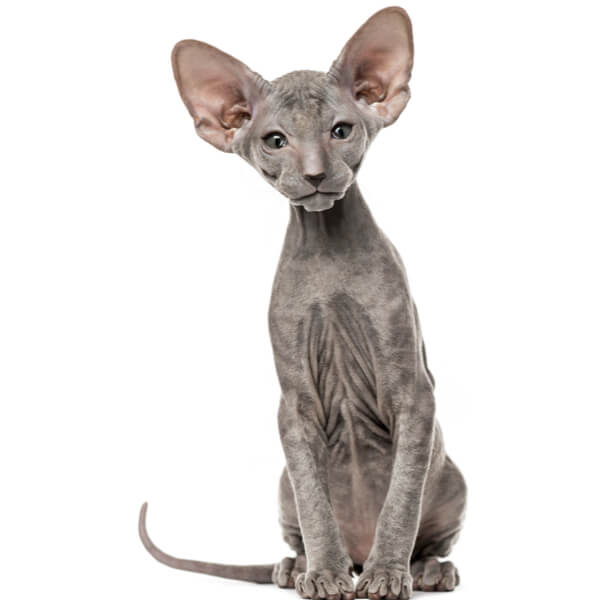

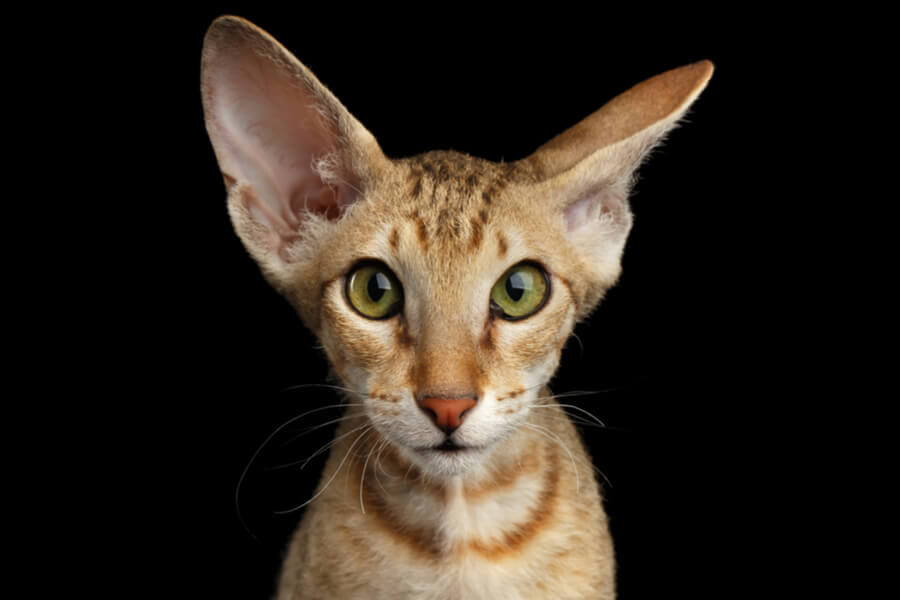


In late 1994, the first recognized Peterbald was born in St. Petersburg, Russia. This was the result of experimental breeding between an Oriental shorthair male and a Don sphynx female. Thus, some straight coated Peterbalds are mistaken for Siamese cats, and the full nude cats are frequently mistaken for Sphynx cats. Today, the Peterbalds are now a genetically separate cat breed.
The gene that produces baldness seems to follow the basic Mendelian genetics; in an average litter of four kittens, one will have an ordinary coat, one will be bald, and two will have a middle variation of their fur. Currently, there is no understanding of why some Peterbald cats' coats can change throughout their lifetimes.
In 2005, Peterbalds were accepted for championship competition by The International Cat Association (TICA) and in 2008 by the American Cat Fanciers Association.
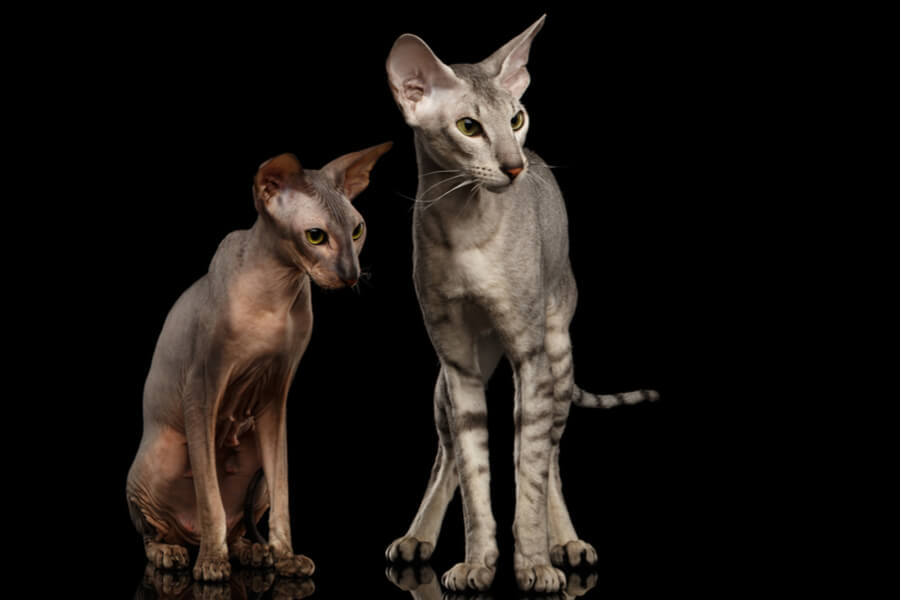
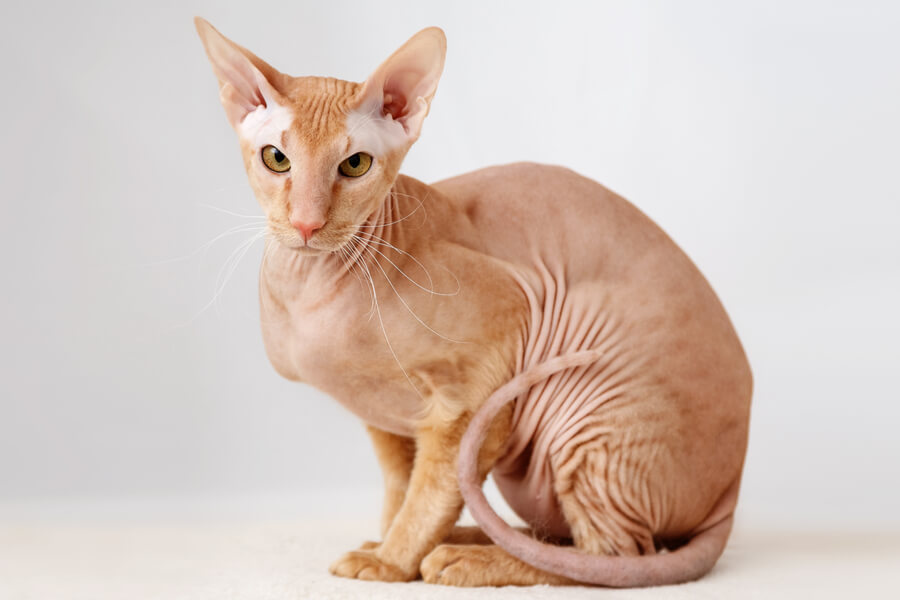
To start with, a Peterbald's coat can come in any of the following:
The coat a Peterbald is born with does not serve as their forever fur. Their coat can change during their first two years, and their hair texture will either be lost or gained. In addition, for multi-coloured Peterbald cats, their coat sometimes grows in two different types of hair. It comes with white parts of their fur being soft, velvety hair and the darker spots being wirier and bristlier.
Some people believe that Hairless Peterbalds are hypoallergenic, but they are not. While Peterbalds are sometimes bald or almost bald, this does not essentially mean that you will not have an allergic reaction. Allergies from cats can begin with their saliva or dander.
Peterbalds are medium-sized cats with a long, slender body shape, tight abdomen, and a typically wedge-shaped head. Their ears tend to be amusingly oversized, and rounded triangles on top of their heads. Their large, almost almond-shaped eyes are commonly green. Their tail is long and whippy. Their whiskers sometimes appear crinkled, curled, or even as barely there, stunted whiskers.
Sociable and fun-loving, the Peterbald is an excellent choice for individuals looking for a feline companion that loves company and attention. You will immediately notice just how much this cat breed loves people. Peterbalds can quickly form intensely strong bonds with their family and frequently follow them from room to room.
Frequently compared to canines for their loyalty level, Peterbalds are a very affectionate, friendly and warm breed. They get along great with other animals, children and even guests whom they enjoy playing host to. They love to follow their favourite human companion around the house and will talk to them as they love being vocal.
This loyalty and devotion means that the Peterbald cat makes a wonderful pet for households with young kids. However, make sure that you can spend adequate time with your Peterbald daily, as this cat breed does not like being left alone for long periods of time. Because of this, they do not do well in a home where the owners are out for long hours everyday.
While the Peterbald cat is frequently described as very affectionate and devoted, these cats also have a solid athletic streak and will enjoy extended play sessions. Because of their lack of fur, Peterbalds have a higher metabolism compared to other cats with full coats, thus, they can appear always hungry and need to eat more than other breeds.
Peterbalds are a highly agile, intelligent and active breed that tend to move fast. They travel well and settle down swiftly once they are tired. Because of their intelligence, they love to be challenged and can play fetch for hours and hours. But at the end of the day, they are equally as happy cuddling on their human companion's lap or under the covers with them at night.
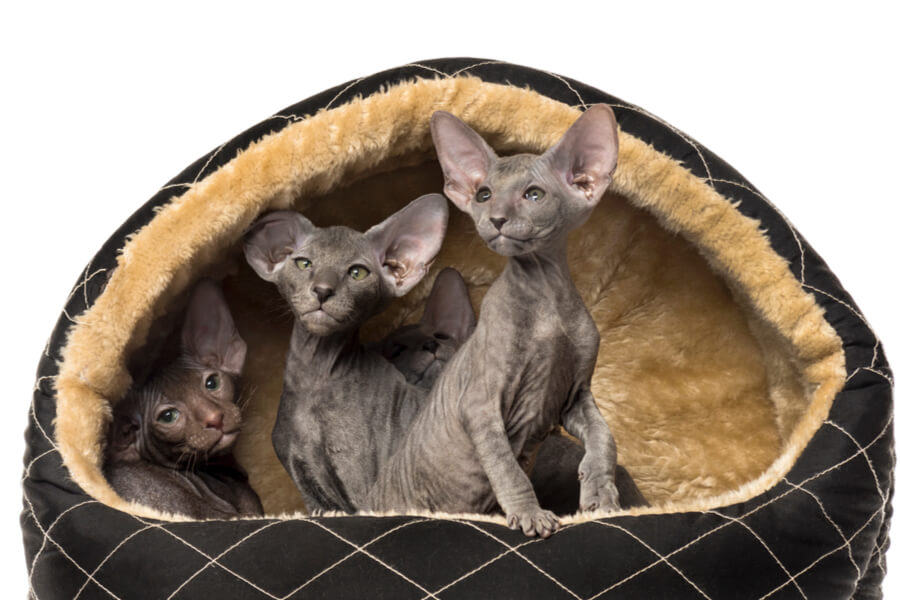
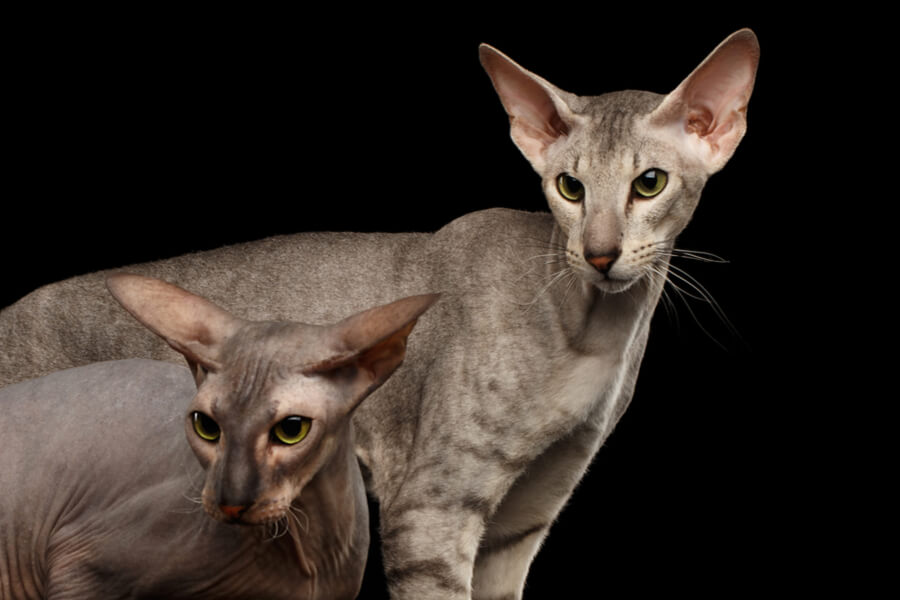
Peterbald cats are clever and enjoy the love and attention that comes with being clicker-trained and taught tricks. Challenge their brain and keep them interested by teaching them games and tricks. Provide them with puzzle toys that will reward them with treats or kibbles when they learn how to manipulate them.
When a Peterbald is effectively socialised and trained during kittenhood, they will grow up to be a well-mannered and well-rounded cat.
Peterbalds are generally hairless. But sometimes, the cat breed will have a very short and fuzzy layer of coat. When it comes to their grooming, you don’t need to brush them, but they do need to be bathed regularly.
A completely hairless Peterbald cat will need bathing at least once a week. This will prevent oil and dirt accumulating on their skin. Those with some hair may not need to be bathed quite as often but a regular bathing schedule is still necessary.
In terms of weather and climate, most Peterbald cats favour warmer weather than cold surroundings as their lack of hair means they get chilly quickly. It is best to keep your cat indoors where they have plenty of warm and cosy spots to lounge around. If they have access to the outdoors, ask your vet about using a cat-friendly sunscreen as like humans, their skin can burn easily.
Regarding their dental hygiene, brush their teeth at least once a week to prevent periodontal disease. Trim their nails twice a month or when needed. For their eyes, wipe the corners with a soft, damp cloth to eliminate any discharge. Make sure to use a separate part of the damp cloth for each eye to avoid spreading any infection.
Check their ears weekly. If their ears look dirty, wipe them out with a cotton ball or soft damp cloth moistened with a vet-approved ear cleaner. If the ear has a foul odour, it is best to contact your vet for treatment.
Their litter boxes should always be clean as they are precise about bathroom hygiene. If it is left unclean, they tend to use other places in the house.
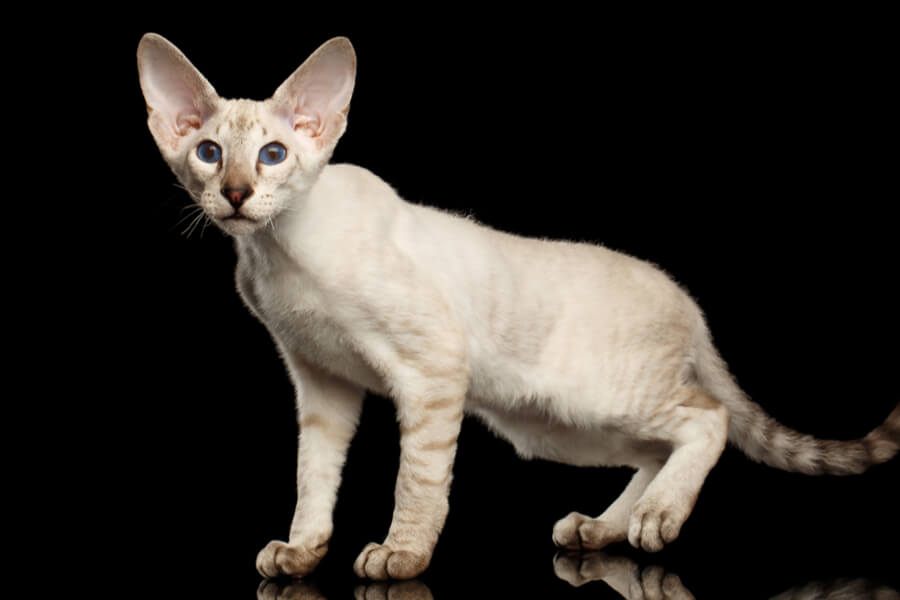
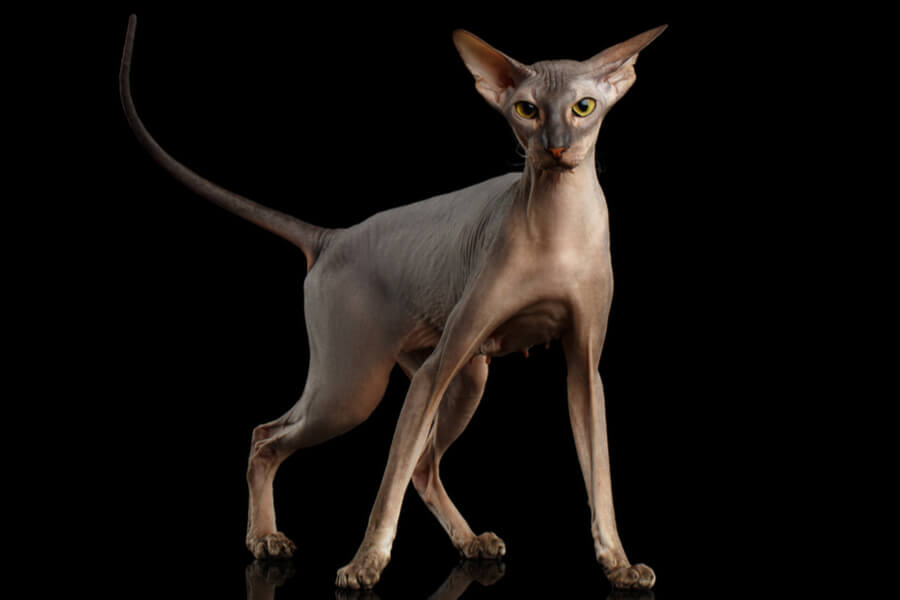
Peterbalds are generally a healthy cat breed. Their life expectancy is between twelve to fifteen years with proper care, exercise, and a high-quality diet. However, they can be inclined to have the same health conditions that the Donskoy cats and Oriental Shorthair cat breeds have like progressive retinal atrophy (PRA) .
This is why it is vital to only buy from a registered and ethical breeder who runs DNA health tests on their cats to check from genetic health conditions like these. Do not purchase a Peterbald cat without seeing proof that they are in good health.
Also bear in mind that fur is vital to a cat’s protection, warmth and even communication. Thus, the Peterbald’s lack of fur means they are sensitive to temperature changes and extremities. Their baldness also means their skin is more susceptible to sunburn, cuts and wounds, and yeast infections.
Peterbalds are an excellent fit for families with young kids. Just make sure to do early socialisation and training and set boundaries for both the child and the cat. In addition, always supervise early interactions between children and Peterbalds.
The welcoming and friendly Peterbald cat commonly gets along well with most domestic animals. But make sure to supervise their interactions because these relationships are very much reliant on the individual pets' traits and characters. It is always best to introduce pets gradually and in a controlled environment to guarantee that they learn to get along well together.
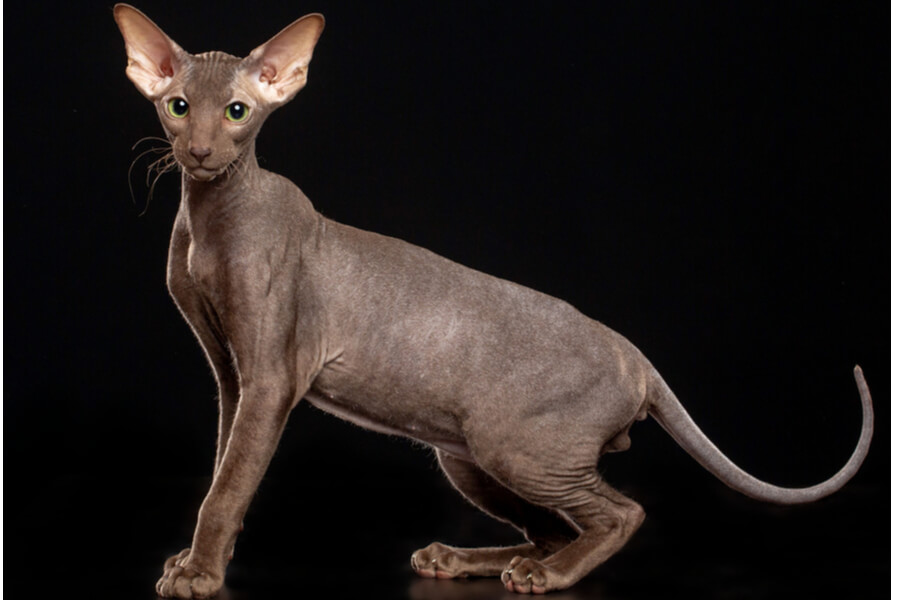

We can connect you with Breeders that are specialized in this particular breed.
See available kittens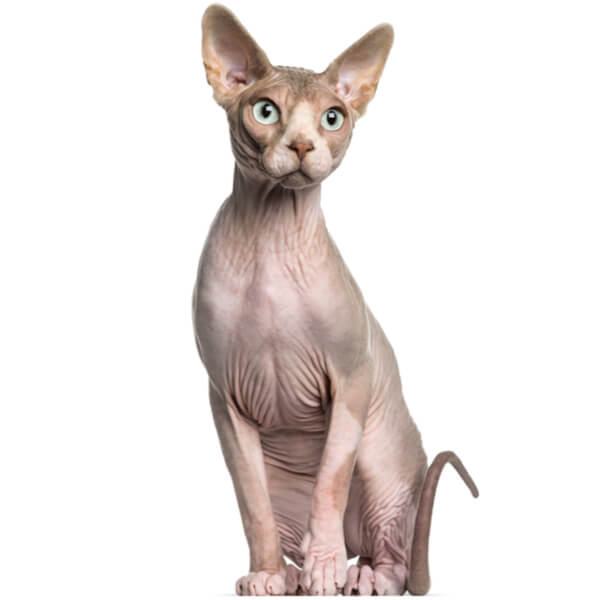
Canada
Size : Medium
Coat : Hairless
Registration : GCCF, TICA, CFA, FIFe
Vocality : High
Hypoallergenic : Yes
Grooming : Once a Week
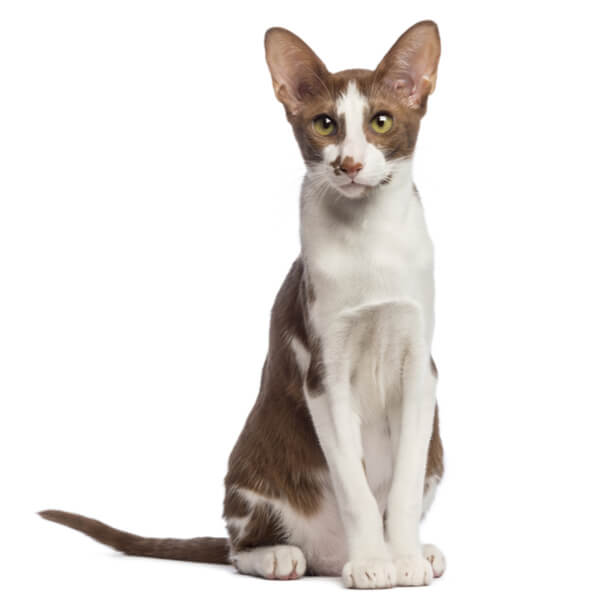
United States of America
Size : Medium
Coat : Short
Registration : GCCF, TICA, CFA, FIFe
Vocality : High
Hypoallergenic : Yes
Grooming : Once a Week
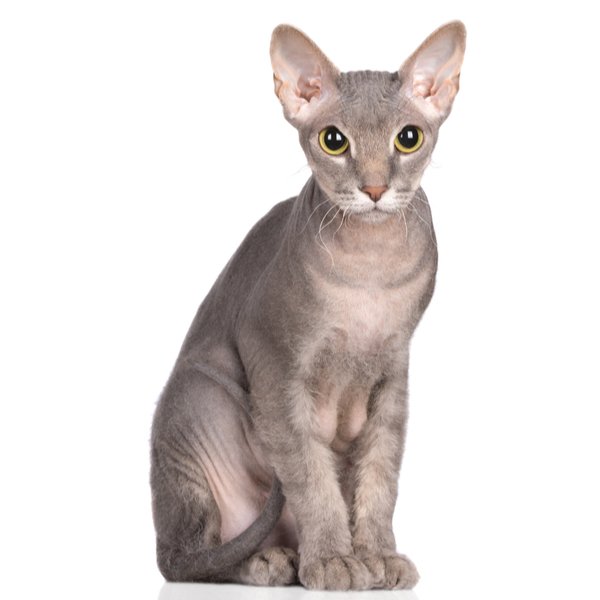
Russia
Size : Medium
Coat : Hairless
Registration : TICA, FIFe
Vocality : Medium
Hypoallergenic : Yes
Grooming : Everyday
.jpg)
United States of America
Size : Small
Coat : Short
Registration : GCCF, TICA, CFA
Vocality : Low
Hypoallergenic : No
Grooming : Once a Week


Need some advice?
Whether you're a first time pet owner, an experienced pet owner, a new or long-time breeder, or just curious about pets, we've got you covered!

January 17, 2024
What Is The Personality Of Russian Blue Cats?
Russian Blue cats are most known for their distinctive shimmery blue-silver coat and piercing green eyes. However, this breed’s calm and gentle temperament is what makes them shine the most in the feline world.

January 17, 2024
10 Facts About Russian Blue Cat Breed
Russian Blues are one of the most aesthetically stunning cat breeds, with a gorgeous plush silvery coat and vibrant green eyes. However, it’s not only their appearance that is beautiful; their nature is too.

January 17, 2024
How To Choose The Right Cat Breed for You
Cats can make the most fantastic animal companions; they are adorable, friendly, and loving. However, not all felines are created equal. There are many different breeds, of which each has its unique personality traits.
Need some help?
Contact us to speak to our friendly advisor, who will gladly help you find your dream pet!



We are registered in England and Wales under registration number 12568840,
and our registered office is at 58-60 Kensington Church Street, W8 4DB London, England.
© 2023 The Pedigree Paws